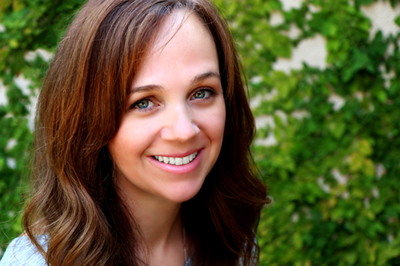
Causes we ❤
My Heart Attack Story
A few years ago, at 37, I had a heart attack from a SCAD. Even though I had been an ER nurse in my previous career, I had never heard of SCAD. So that Wednesday afternoon, when I started to suddenly feel tired and have an ache in my chest, I didn’t think it was a heart attack. I simply went ahead and made lunch for my three kids who were 2, 4, and 6 years old at the time.
Over the next 20 minutes, my chest pain became severe, radiating to my back and I became nauseated, clammy and light-headed. I knew something wasn’t right - but I didn’t think it was a heart attack. Thirty-seven year old moms don’t have heart attacks. They can pull a muscle, or feel burned out, or even have a blood clot. But they don’t have heart attacks. Especially from making lunch for their kids.
My husband insisted we go to the ER (the ER I use to work in). He quickly put the kids in the car and we went to the hospital. By the time we arrived, I felt better and foolish for coming. They quickly took me back to a room and ran an EKG. Joe, my former co-worker, looked concerned and handed me a copy of the EKG. I read it quickly and saw that this person was having a heart attack. And then I looked at the name in the upper corner of the paper. It was my name. I kept glancing back and forth from the ill EKG tracing to my name. It had to be a mistake. “Joe,” I said, “I can’t be having a heart attack”. He was quiet and said he would give it to the doctor right away. The ER doctor and Cardiologist both confirmed I was having a heart attack. But they didn’t know why.
I spent the night in the ICU and early the next morning was taken to the Cardiac Cath Lab. I don’t remember much from the procedure but after the sedation wore off I was told an artery, that supplies my heart with blood, had "dissected" (or torn), and they had to insert "stents" to repair the artery. This was called a SCAD (Spontaneous Coronary Artery Dissection).
What is SCAD?
A SCAD occurs when a split or separation suddenly develops between the layers of the wall of one of the blood vessels (artery) that provides blood flow to the heart. The space between the layers of the artery wall may fill with blood - which may reduce or block blood flow through the artery; or a flap of loose tissue from the dissection may create a blockage.
- If not diagnosed and treated quickly, SCAD may lead to a heart attack, cardiac arrest and/or death.
- SCAD is a relatively rare and poorly understood.
The average age of a SCAD patient is about 42 years but it can occur in people as young as their early 20’s. - SCAD is more than twice as common in women as in men.
- Approximately 70% of SCAD cases occur in women under age 50 years (1/3 of those cases occurring in the post-partum period).
- Approximately 20% of the time it is fatal.
- There is approx. a 20% chance of reoccurrence or having another SCAD event after you have had your first.
How to Help
Life changed for me that day. The months following my SCAD I felt constantly tired, had to adjust to my new medication, and completed cardiac rehab - but the hardest adjustment was not knowing what caused my SCAD and being told it may happen again.
It has been 2 years since that day in August, 2013. I am grateful for my health and for my husband who insisted I go to the ER that day. As our company has grown, we have decided to support Scad Research Inc. This nonprofit organization raises money to support a Mayo Clinic study about SCAD, conducted by Dr. Sharon Hayes. More money needs to be raised to spread awareness about SCAD because every woman, no matter how young, needs to know they shouldn’t ignore the signs of a heart attack. It could happen to them.
If you would like to donate, please click on the link to donate directly to the SCAD Research Inc. Foundation. Thank you from the bottom of my stented, healthy heart.
Sincerely,
Erin Balogh
President, Holster Brands
